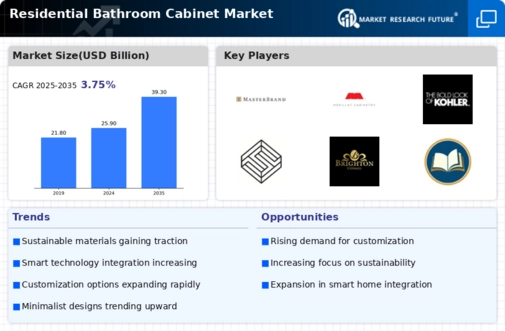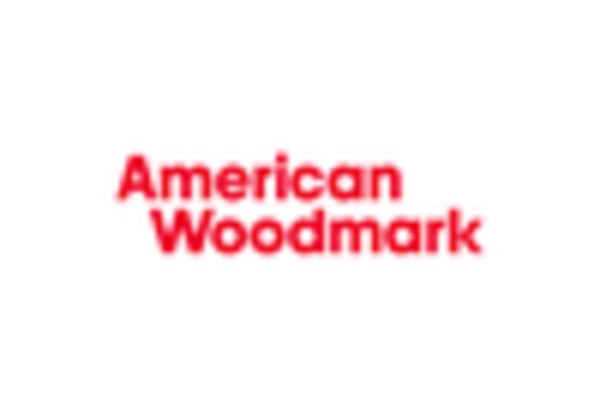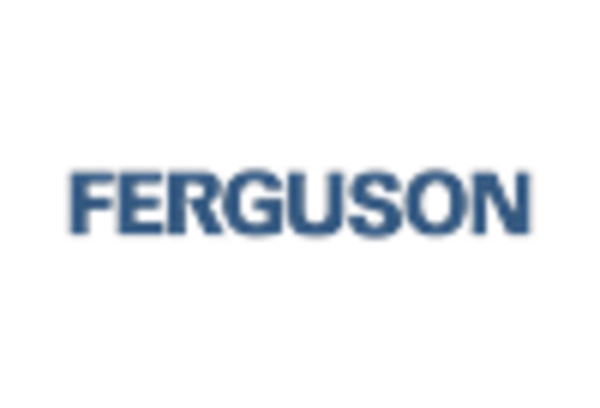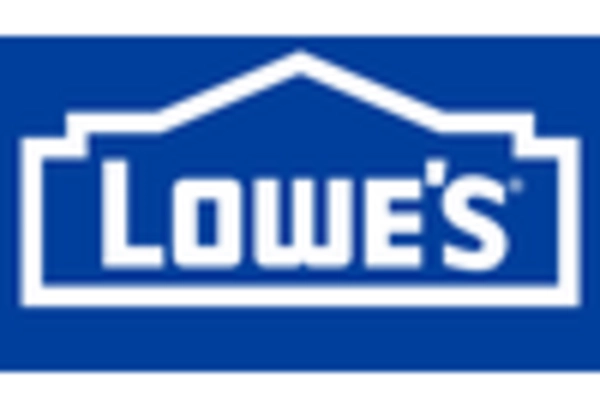Rising Home Renovation Activities
The Residential Bathroom Cabinet Market is experiencing a surge due to increasing home renovation activities. Homeowners are investing in upgrading their bathrooms to enhance aesthetics and functionality. According to recent data, the home improvement sector has seen a steady growth rate of approximately 5% annually, indicating a robust demand for bathroom fixtures, including cabinets. This trend is likely driven by a desire for modernized living spaces, which often prioritize stylish and efficient storage solutions. As more individuals opt for renovations rather than moving, the demand for high-quality bathroom cabinets is expected to rise, further propelling the Residential Bathroom Cabinet Market.
Growing Emphasis on Space Optimization
In urban environments, where living spaces are often limited, the Residential Bathroom Cabinet Market is benefiting from a growing emphasis on space optimization. Consumers are increasingly seeking multifunctional furniture that maximizes storage without compromising on style. The trend towards smaller living spaces has led to a demand for compact and innovative cabinet designs that can fit into tight areas while providing ample storage. Market data suggests that the demand for space-saving solutions has increased by around 7% in recent years, indicating a shift in consumer preferences. This focus on efficient use of space is likely to continue influencing the Residential Bathroom Cabinet Market.
Technological Advancements in Manufacturing
Technological advancements in manufacturing processes are playing a crucial role in shaping the Residential Bathroom Cabinet Market. Innovations such as automated production lines and advanced materials are enabling manufacturers to produce high-quality cabinets more efficiently. This not only reduces production costs but also allows for greater customization options, catering to diverse consumer needs. Recent data indicates that the adoption of technology in manufacturing has increased productivity by approximately 15%, which could lead to lower prices for consumers. As technology continues to evolve, it is likely to further enhance the capabilities of the Residential Bathroom Cabinet Market.
Increased Consumer Awareness of Design Trends
The Residential Bathroom Cabinet Market is also influenced by heightened consumer awareness of design trends. As access to design resources and inspiration has expanded through digital platforms, consumers are more informed about contemporary styles and materials. This awareness drives demand for cabinets that reflect current trends, such as minimalist designs and eco-friendly materials. Market analysis indicates that approximately 60% of consumers prioritize aesthetics in their purchasing decisions, which has led to a rise in demand for stylish bathroom cabinets. This trend suggests that manufacturers in the Residential Bathroom Cabinet Market must adapt to evolving consumer preferences to remain competitive.
Sustainability Trends in Consumer Preferences
Sustainability trends are increasingly influencing the Residential Bathroom Cabinet Market as consumers become more environmentally conscious. There is a growing demand for cabinets made from sustainable materials, such as reclaimed wood and low-VOC finishes. Industry expert's indicates that around 45% of consumers are willing to pay a premium for eco-friendly products, reflecting a shift towards sustainable living. This trend is prompting manufacturers to innovate and offer environmentally responsible options, which could enhance their market position. As sustainability becomes a priority for consumers, the Residential Bathroom Cabinet Market is likely to see a continued rise in demand for eco-friendly cabinetry solutions.


















Leave a Comment